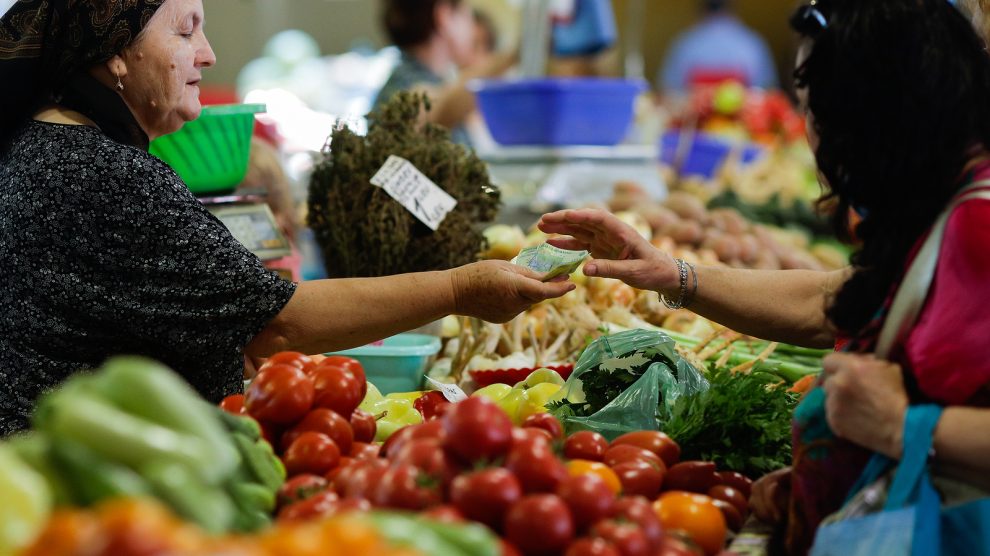Romania has remained largely resilient to the external shocks of last year, although growth is expected to slow in 2023. Inflation and emigration remain high.
The sixth most populous country in the European Union, Romania has over the past three decades Romania made impressive strides in raising its economic performance and prosperity.
It joined NATO in 2004 and became an EU member in 2007—although, more than 15 years later, it has still not been admitted to the Schengen Area or the eurozone.
- Stability or stagnation? Romania’s new PM offers little
- Romania’s luddites push back against automation
- The end of emerging Europe’s involvement in Russia’s ‘opaque’ development bank
While poverty was still rampant when Romania joined the EU and the country has continued to struggle with high emigration rates, it has emerged as a remarkably resilient economy classified as “developed” by the 2023 edition of the United Nations World Economic Situation and Prospects.
It is a hub for automobile manufacturing and IT, and in the latest edition of the Emerging Europe IT Competitiveness Index ranked Romania sixth out of the 23 countries in the region and first in the region for IT infrastructure.
Resilience
Like the rest of the EU, Romania saw higher than usual inflation and disruptions from the war in Ukraine in 2022.
The annual Harmonised Index of Consumer Prices (HICP) peaked in November 2022 at 14.6 per cent and averaged 12 per cent for the year—it would have been higher if not for temporary subsidies on motor fuel and price caps on electricity and gas. Inflation is forecast to decrease to nine per cent for 2023.
Dr Gabor Hunya, a senior research associate at the Vienna Institute for International Economic Studies (wiiw) who authored its April forecast for Romania, tells Emerging Europe, “Economic growth decelerated to 2.3 per cent in the first quarter of 2023: household consumption and public investments were buoyant whereas the depletions of inventories put on strong brakes. The current account deficit narrowed while the fiscal deficit target will be missed.”
Dr Hunya says that wiiw’s annual forecast of three per cent GDP growth for 2023 remains unchanged. Even as food prices remain high and loans to the private sector stagnate, Romania is set to avoid the contractions faced by other countries in the region.
Romania has been more resilient to recent external shocks than its peers “largely due to its lower exposure to external markets and the very significant inflow of EU funds and foreign direct investment (FDI),” Dr Hunya tells Emerging Europe.
“By implementing the ongoing investment programmes, Romania can strengthen its energy self-sufficiency and benefit more from the transport re-direction from Ukraine and Moldova.”
According to wiiw, EU funds amounted to 11.8 per cent of public revenue in 2022 and the government expects this to rise to 13.2 per cent in 2023. Projects have begun in healthcare, green energy, transport infrastructure, and environmental protection that will continue to sustainably improve Romanians’ quality of life.
Romania has large gas reserves and has worked to increase its energy independence since Russia’s full invasion of Ukraine began early last year.
On June 20, the government greenlit the start of the construction of a long-awaited gas pipeline to link the Neptun Deep offshore gas development to the country’s gas transmission network and facilitate the delivery of imported natural gas to the southern part of the country.
The pipeline will link to the BRUA pipeline project that will form part of a future gas corridor through Bulgaria, Romania, Hungary, and Austria.

High emigration and labour challenges
While Romania has benefitted from a massive inflow of EU funds since it joined in 2007, it has also lost 11 per cent of its population since then as many low-skilled Romanians emigrated to wealthier EU member states.
“Romania has a relatively low employment rate, high emigration and in some areas a pressing labour shortage,” Dr Hunya said. “The latter is partly cured by organised immigration of labour from third countries, but net international migration remains negative.”
The EU is sending Romania 80 billion euros of pandemic recovery and other aid—a third of which is earmarked for infrastructure in the coming five years—but there are fears that labour shortages could slow the projects while raising costs.
While many Ukrainian refugees transited through Romania, only a few thousand have stayed—Romanian is a very different language from Ukrainian and other Slavic languages spoken in neighbouring countries.
Romania’s government is working to increase immigration from other countries—especially those in South Asia—by half a million to boost the workforce by ten per cent.
If the EU funds continue and household and external demand fully rebounds, wiiw forecasts Romania could see four per cent GDP growth in 2024. Whenever the country is eventually admitted to the Schengen Area, the economy will see a further boost.
Unlike many news and information platforms, Emerging Europe is free to read, and always will be. There is no paywall here. We are independent, not affiliated with nor representing any political party or business organisation. We want the very best for emerging Europe, nothing more, nothing less. Your support will help us continue to spread the word about this amazing region.
You can contribute here. Thank you.







Add Comment